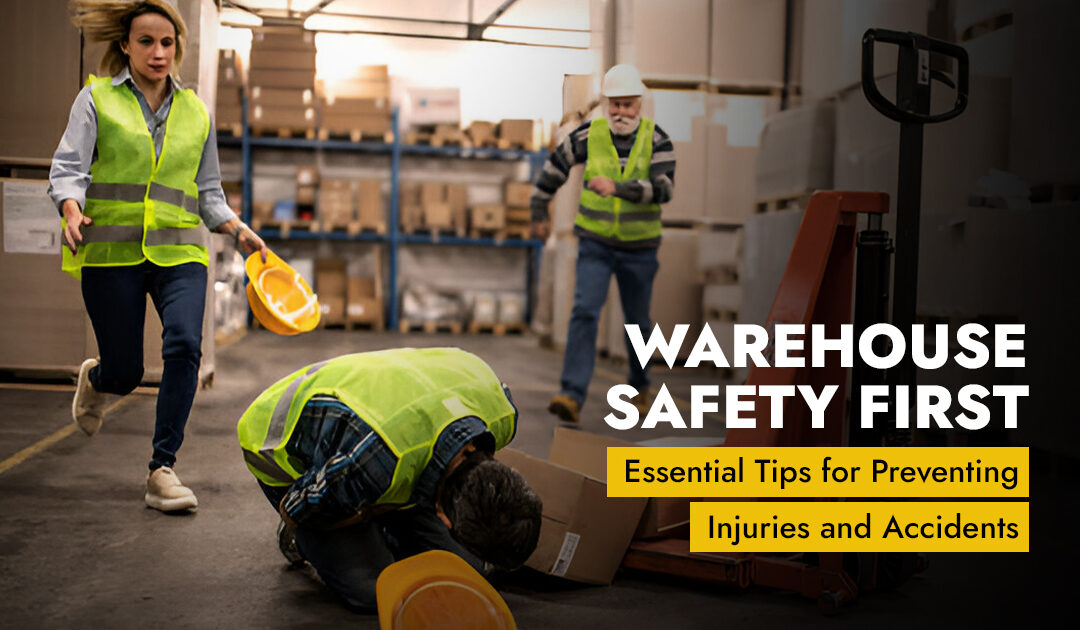Warehouses are the beating heart of many industries, keeping goods flowing and supply chains humming. But with all that activity comes inherent risks. From towering shelves to heavy machinery, a warehouse environment can pose a variety of hazards to employees.
That’s where warehouse safety comes in. It’s not just about following rules – it’s about creating a culture of awareness and prevention. By prioritizing safety, you can significantly reduce the risk of accidents, injuries, and costly downtime. This translates to a happier, healthier workforce, and a more efficient operation overall.
Warehouses thrive on order, and safety is key. Train staff to spot hazards and lift properly. Keep aisles clear, shelves secure, and flammables stored safely. Enforce PPE like steel-toed boots and use mechanical lifts for heavy items. Regular inspections and clear emergency plans ensure everyone goes home safely. Warehouses may be hectic places with dangers lurking everywhere. Nonetheless, you may drastically reduce the possibility of mishaps and staff injuries by emphasizing safety and putting in place strict procedures. Here are a few crucial pointers:
- Training & Awareness:
- Comprehensive safety training: Ensure that every employee receives thorough safety instruction on everything from identifying hazards and using safe lifting techniques to handling forklifts (if necessary) and emergencies. Regular refresher training is also very important.
- Promote a culture of safety: Encourage an atmosphere at work where safety comes before production targets or shortcuts. Promote open communication and provide staff members the authority to report dangerous situations or procedures.
- Warehouse Organization & Maintenance:
- Maintain a clean and orderly space: Disarray leads to trip and fall risks. Establish routine cleaning routines and give each material a designated place to be stored.
- Regular inspections: Regularly check shelving units, forklifts, and other equipment to find and fix any possible issues before they become dangerous.
- Mark hazardous areas clearly: Areas containing dangerous materials, restricted access areas, and electrical hazards should all be clearly labeled.
- Safe Material Handling:
- Ergonomics matter: To avoid back injuries, teach staff members safe lifting techniques. Whenever feasible, promote the use of mechanical lifting aids.
- Forklift safety: Only trained personnel should operate forklifts. Enforce stringent safety measures, such as regular inspections, appropriate load restraint, and defensive driving techniques.
- Safe storage practices: Make sure that all loads are firmly and properly packed, and place larger goods on the lower shelves. Never go over weight restrictions.
- Personal Protective Equipment:
- Provide the right gear: Give workers the PPE, such as steel-toed boots, safety glasses, gloves, and hard hats, that they need for their jobs.
- Proper attire: Encourage staff members to dress comfortably and with ample movement in mind; steer clear of baggy apparel that can snag on equipment.
- Emergency Preparedness:
- Fire drills and evacuation plans: Make sure all staff members are knowledgeable about emergency protocols and evacuation routes by doing frequent fire exercises.
- Ready-to-go first aid kit: Have staff members who have received basic first-aid response training and keep a fully supplied first-aid kit.
Warehouses can be bustling hubs of productivity, but safety should never be an afterthought. From training employees to identify hazards to maintaining a clean organized space; and from ensuring proper ergonomics to ensuring safety gear and planning for emergencies, you could offer your warehouse workers a safe and effective work environment. By prioritizing these measures, you foster a safe and productive environment for everyone. Remember, a commitment to safety benefits your employees, reduces costs and keeps your warehouse running smoothly. Keep in mind that putting safety first helps everyone: it lowers your overall operating expenses, safeguards the well-being of your staff, and minimizes lost workdays due to accidents.

